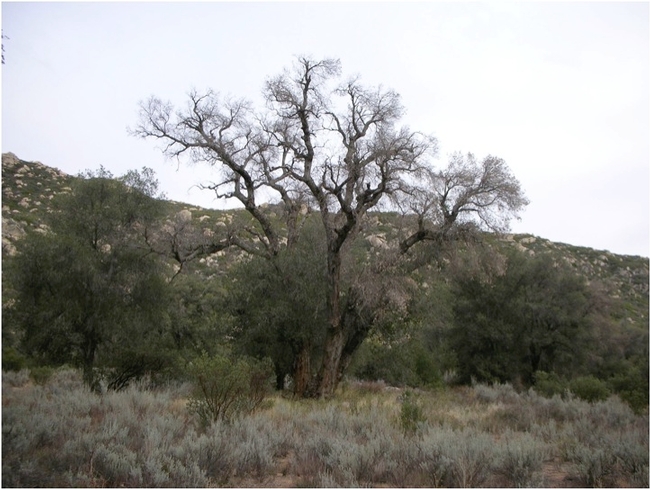If you live in or own property in Southern California, or maybe you just love nature and oak trees, you might know a bit about an invasive pest called goldspotted oak borer (
Agrilus auroguttatus). The goldspotted oak borer (GSOB) is native to Mexico, Guatemala and southern Arizona, and was first identified in California in 2004. However, it wasn’t until 2008 that researchers determined that extensive oak mortality in rural east San Diego County was being caused by GSOB. Subsequent dendrochronolgy studies (looking at tree rings on dead oak stumps) have revealed that the earliest GSOB attacks actually occurred starting in the year 2000. An adult GSOB is a dark green, bullet-shaped beetle usually around 10 mm long with three gold spots on each of its wings. However, the adult form does not pose a threat as much as GSOB larvae, which bore into the bark of the oak and create large galleries where they feed on the tree causing major damage to the oak’s cambium. The cambium is a tree tissue that is vital to oak growth.
The loss of oak forests in Southern California can have tremendous environmental, cultural and economic impacts. This issue is very significant to local native American tribes that have oaks as a centerpiece of their culture. Other negative impacts include loss of biodiversity; habitat loss; increased fire risk due to the rising numbers of dead oaks in wildfire-prone areas; and loss of aesthetic value for those who camp, hike, and own properties with oak trees. Researchers who aim to combat the effects of GSOB using integrated pest management and oak restoration methods are contributing to a rising oak woodlands movement. If you want to be part of the movement, stay tuned and keep an eye out for damage these little guys are causing.
Want to volunteer? Have you seen GSOB on your property? See the GSOB website to learn more.
Photo Source: Tom Coleman, USDA Forest Service and Kim Camili, CAL FIRE



